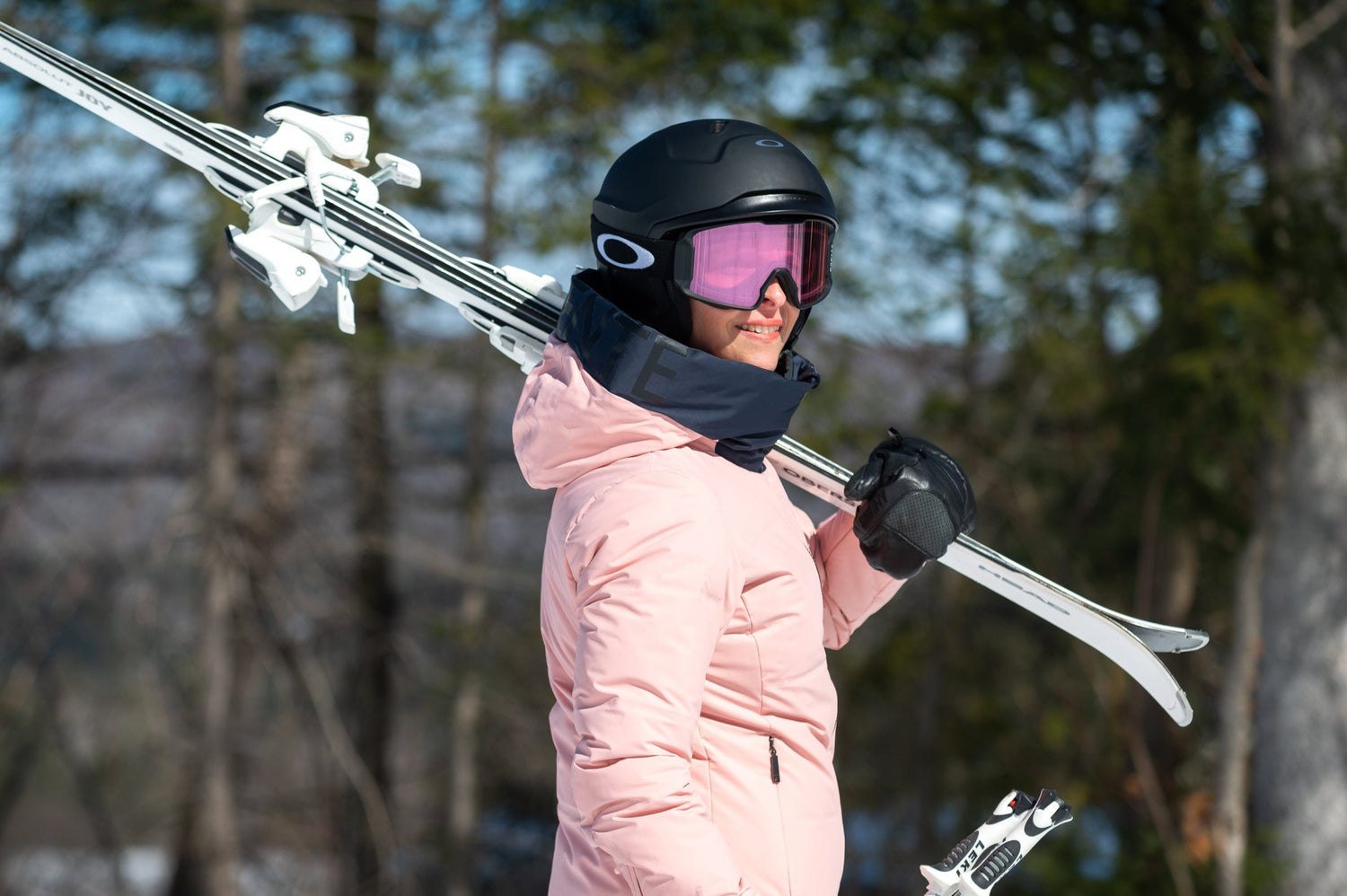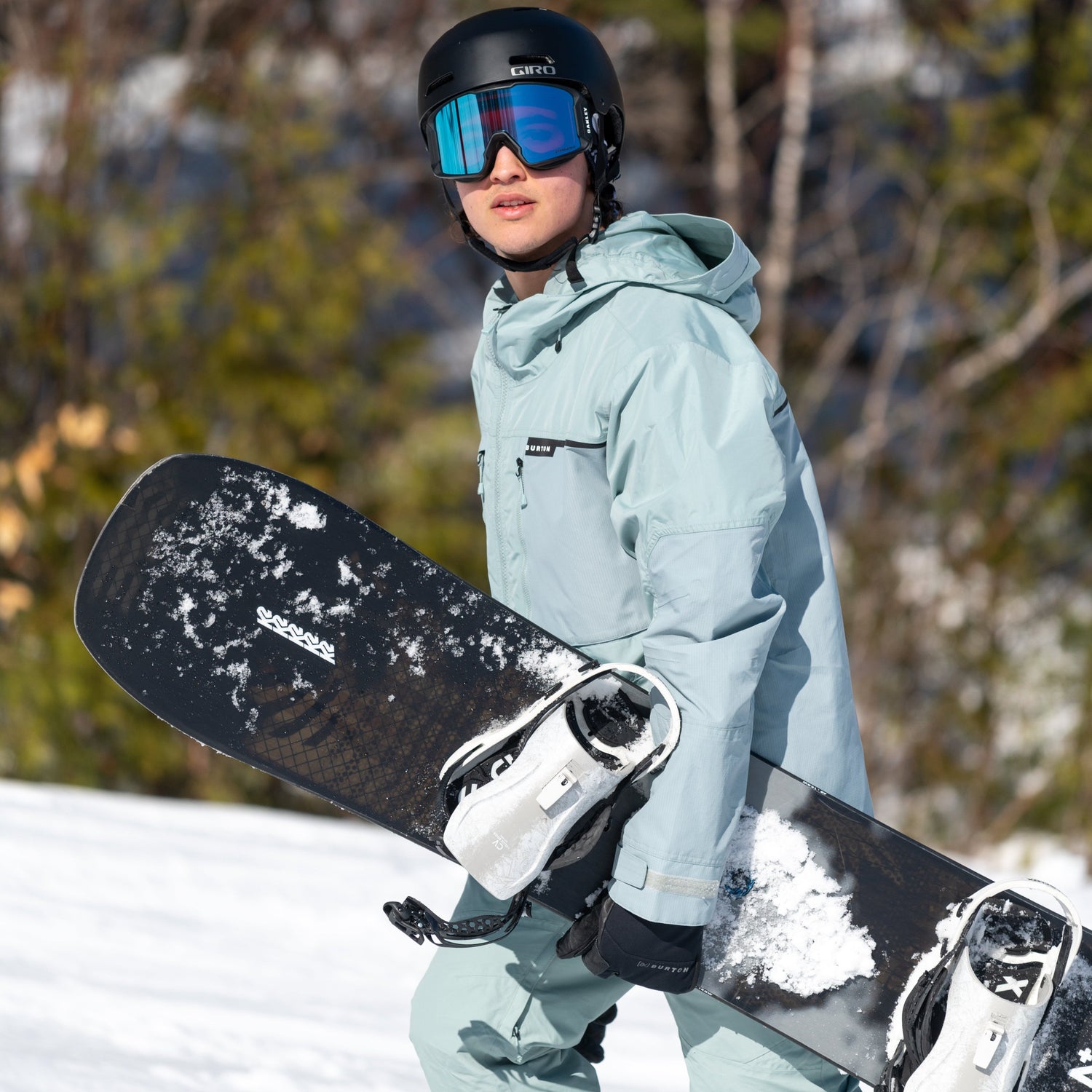Oberson x Avalanche Québec
_____________________________
1. Do I have the right equipment?
Having the right equipment does not only mean touring skis, climbing skins, boots or backpacks. We are talking about avalanche safety equipment. The three main tools for safe navigation are the avalanche beacon, shovel and probe. These are not an option when exploring the backcountry; they are necessary tools to have in the event of an accident.
In addition, communication equipment such as satellite phones, GPS and a complete first aid kit should be on the list.
Want to know more about what equipment to take with you? Please read our article on the must-haves for backcountry skiing and split boarding.
2. Do I know how to use the avalanche safety material properly?
The must-have trio during an outing, the beacon, the shovel and the probe all play a crucial role that allows you to react in case of an accident. Bringing them along is one thing, but they won't help if you don't know how to use them. However, if you know how to use them properly, it will make all the difference for you and your group members.
The avalanche beacon is used to search for a person buried under the snow by sending a signal between transmitters. It can send and receive signals. Once the search area is defined, the probe is used first to reach the victim's body and then evaluate the depth at which the person is buried. Then, the shovel will be used to free the body to carry out the evacuation. And this in an efficient and well thought out manner.
The survival rate drops drastically after 15 to 30 minutes. You will not have the time to call for outside help, and you'll have to carry out the search and rescue operation yourself.

3. Do I know which information I need before leaving?
Avalanche terrain has its risks. Having the right security equipment is not enough; you must search for the right resources and analyze certain information to determine your choice of area to explore.
The avalanche bulletin available online on the Avalanche Québec website is the first tool to check and analyze. And this, a few days before and on the day of your outing. In addition, factors such as temperature, wind and precipitation impact the snowpack and, therefore, the risk of avalanche. Since conditions can change quickly, it is always good to have a plan B!
4. Do I have the necessary backcountry experience?
Of course, you can ski the double diamonds like a pro at the resort. Unfortunately, this ability won’t help you in the backcountry. Skiing the avalanche terrain requires more than just skill; knowledge, experience, orientation, and communication are more critical than downhill abilities. You need to be ready for all possibilities to avoid being caught by surprise.
Remember, even if the other group members are trained, it doesn’t mean that you are safe. Each participant must be able to act in the event of an accident.
5. Do I have all the right skills in the event of an accident?
THE ultimate question! Knowing what to do in the case of an accident is more than knowing how to use the avalanche security equipment. It’s also about being ready to evacuate a person from the group, to treat an injury or any other serious situation. Avalanche Quebec strongly suggests taking the Avalanche Safety Training Level 1 (AST-1) and Level 2 (AST-2) trainings. In addition, all the first aid in remote areas courses and the introduction to weather course are excellent skills to acquire.
So, are you ready? Don't forget that guided tours are a great way to get acquainted with backcountry adventure. You'll be able to assess your skill level, explore safely and learn about this type of terrain.
 Pictures credit to Avalanche Québec
Pictures credit to Avalanche Québec



